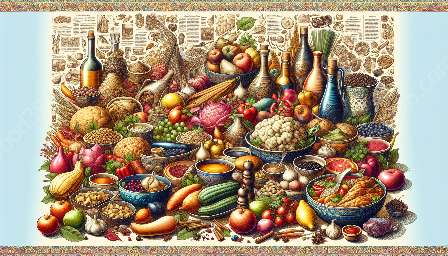Introduction to Culinary Fusion
Culinary fusion is the creative blending of different culinary traditions and techniques in cooking. It is a reflection of the dynamic and multidimensional nature of human migration and exchange throughout history. The fusion of cuisines is a testament to the interconnectedness of cultures and the mutual exchange of knowledge and flavors.
Historical Migration and Exchange
The origins of culinary fusion can be traced back to the historical migration and exchange of different communities and civilizations. As people moved across continents, they carried with them their culinary traditions, ingredients, and cooking techniques. This resulted in the cross-pollination of food cultures and the emergence of new, hybrid cuisines.
Influence of Geography on Food Culture
Geography plays a pivotal role in shaping food culture. The availability of local ingredients, climate, and topography greatly influences the types of foods that different regions cultivate and consume. In turn, this impacts the flavor profiles and cooking methods that characterize a particular cuisine.
Origin and Evolution of Food Culture
The origin and evolution of food culture are deeply intertwined with historical migration and exchange. Over the centuries, the movement of people, conquests, trade routes, and colonialism have all contributed to the exchange of ingredients and culinary practices, leading to the development of diverse and interconnected food cultures.
Culinary Fusion in Practice
One example of culinary fusion resulting from historical migration and exchange is the Peranakan cuisine in Southeast Asia. It is a blend of Chinese, Malay, and Indonesian influences, which originated from the intermarriage of Chinese immigrants and local Malay/Indonesian communities. The Peranakan cuisine is characterized by the use of unique ingredients and cooking techniques that reflect the amalgamation of multiple cultural traditions.
Similarly, the fusion of Spanish and indigenous Mexican cuisines following the Spanish conquest of the Aztec Empire is another example of how historical migration and exchange have influenced culinary practices. This blending of culinary traditions has given rise to iconic dishes such as mole poblano and chiles en nogada.
Impact of Culinary Fusion
The impact of culinary fusion from historical migration and exchange is profound, as it has enriched the global culinary landscape with diverse flavors and ingredients. It has also facilitated cultural appreciation and understanding, as people come together to share and celebrate the unique amalgamation of flavors and traditions.
Conclusion
Culinary fusion from historical migration and exchange is a testament to the dynamic nature of human interaction and interconnectedness. The evolution of food culture and the influence of geography on culinary practices are inextricably linked, shaping our understanding and appreciation of diverse food traditions. By recognizing the historical roots and diverse influences on our food, we gain a deeper appreciation for the rich tapestry of flavors that define our global culinary heritage.


